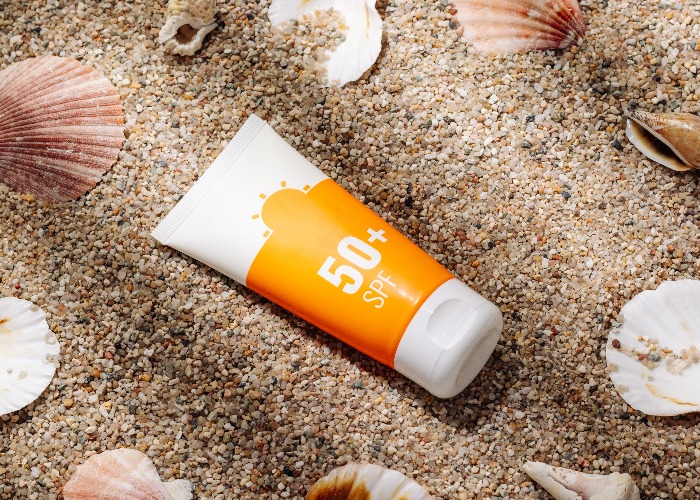
As temperatures rise, Katy Ward reveals suntan lotions to avoid and the brands that offer the best value for money.
With Summer having (theoretically) arrived, many of us will be heading abroad for our two-week break or venturing into the garden for a post-Euros BBQ.
It goes without saying that it’s important to lather on the sunscreen as temperatures soar.
However, it would be a mistake to assume all suntan lotions are created equal.
With that in mind, consumer group Which? has put some of the most popular brands through rigorous safety testing to determine which ones offer the most (and least) protection.
According to the researchers, all tests are conducted to recognised global and British standards for skin protection.
In the interest of fairness, Which? performed a test and then a re-test on all the products mentioned below.
The best fee-free travel credit cards to use abroad
Three sunscreens to avoid
Worryingly, some popular brands failed the safety tests, which assess SPF (sun protection factor) and UVA protection.
Here are the three brands highlighted by Which?:
Asda Protect Moisturising Sun Lotion SPF30 High (£2.80/200ml)
Although this product passed the Which? safety test in 2022, the most recent investigation found that it failed to provide the claimed SPF30 protection.
As a result, the consumer group has labelled the product as “Don’t Buy”.
Responding to the findings, an Asda spokesperson said: “We recently had this sun lotion re-tested by a leading external provider using internationally recognised testing methods.
"The results confirmed a sun protection factor of 31.5; therefore, we do not recognise the test results Which? has published.
"The formulation has not changed since 2022, so we question the validity of the Which? test.”
Bondi Sands SPF50+ face sunscreen lotion (£7.99/75ml)
According to the research from Which?, this product failed the SPF tests twice.
As well as not “coming close to the claimed SPF”, the sunscreen didn’t meet the required UVA protection.
Bondi Sands released a statement in response to the Which? research, in which it said: "Bondi Sands works with Delphic HSE to ensure all our SPF products meet EU regulations, with validated SPF, broad spectrum and water-resistant testing to support all product claims.
"Delphic HSE reviews efficacy testing data as part of the pre-market compliance process, to ensure that products which are placed on the market are safe and compliant with relevant regulations and have appropriate evidential support for any product claims made, including sunscreen efficacy."
It added that all its products undergo rigorous testing processes to ensure they meet and exceed industry standards and requirements.
"Bondi Sands will work with Which? to better understand testing results."
Calypso Press & Protect Sun lotion SPF30 (£8/200ml)
When releasing its findings, Which? characterised this pump-action product as “another to avoid” as it “barely mustered” two-thirds of its claimed SPF.
When approached for a comment, Calypso Sun replied: “All products are carefully and independently tested and have passed EU standards and regulations.”
The best value brands
Luckily, however, it isn’t all doom and gloom this Summer.
As well as vetting sunscreen for safety, Which? also identified the products that offer the best value for money.
Perhaps unsurprisingly, the discounter chains came out on top.
At Lidl, the brand’s SPF30 Cien sun spray and SPF50+ Cien Kids sun spray were deemed winning products.
For Aldi, Lacura SPF30 was judged to be safe and top value for money.
The safest products
Here’s a full list of all the sunscreens that passed the Which? safety checks.
SPF30 sun cream test passes
- Aldi Lacura SPF30 Sun Lotion, £2.49/200ml
- Lidl Cien Sun Spray SPF30, £3.29
- Piz Buin in Sun Moisturising Sun Lotion SPF30, £6.50/200ml
SPF 50+ kids’ sun cream test passes
- Aldi Lacura SPF50+ Kids Mini Lotion, £1.35/50ml
- Garnier Ambre Solaire Kids Water Resistant Sun Cream Spray SPF50+, £8/150ml
- Lidl Cien Kids Sensitive Sunscreen Spray SPF50+ £3.29/200ml
- Nivea Sun Kids Protect & Care Coloured Spray SPF50+, £7.00/200ml
- Ultrasun Kids SPF50+, £32.00/150ml
SPF50/+ face sun cream test passes
- Boots Soltan Brightening Protect & Moisturise Facial Suncare Cream with Vitamin C SPF50, £6.50/50ml
- Garnier Ambre Solaire Super UV Daily Invisible Face Serum with SPF 50+, £9.49/30ml
- Nivea Sun UV Face Anti-Age Q10 Cream SPF50, £10.00/50ml
- Ultrasun Face SPF50+, £26.00/50ml
5 sneaky holiday rip-offs when you’re booking online
How did Which? test the sunscreens?
The consumer champion uses a range of methods to put the products through their paces.
This includes applying products to volunteers’ backs and then shining a UVB lamp on them to test for SPF levels.
Testing UVA levels involves coating a plate glass with each sun cream and using a spectrophotometer to record the product’s absorption levels.
Scarily, the consumer champion reports that each year some brands fail to live up to their advertised safety standards.
On top of this, Which? also tests how easy each product is to apply and the pleasantness of the smell.